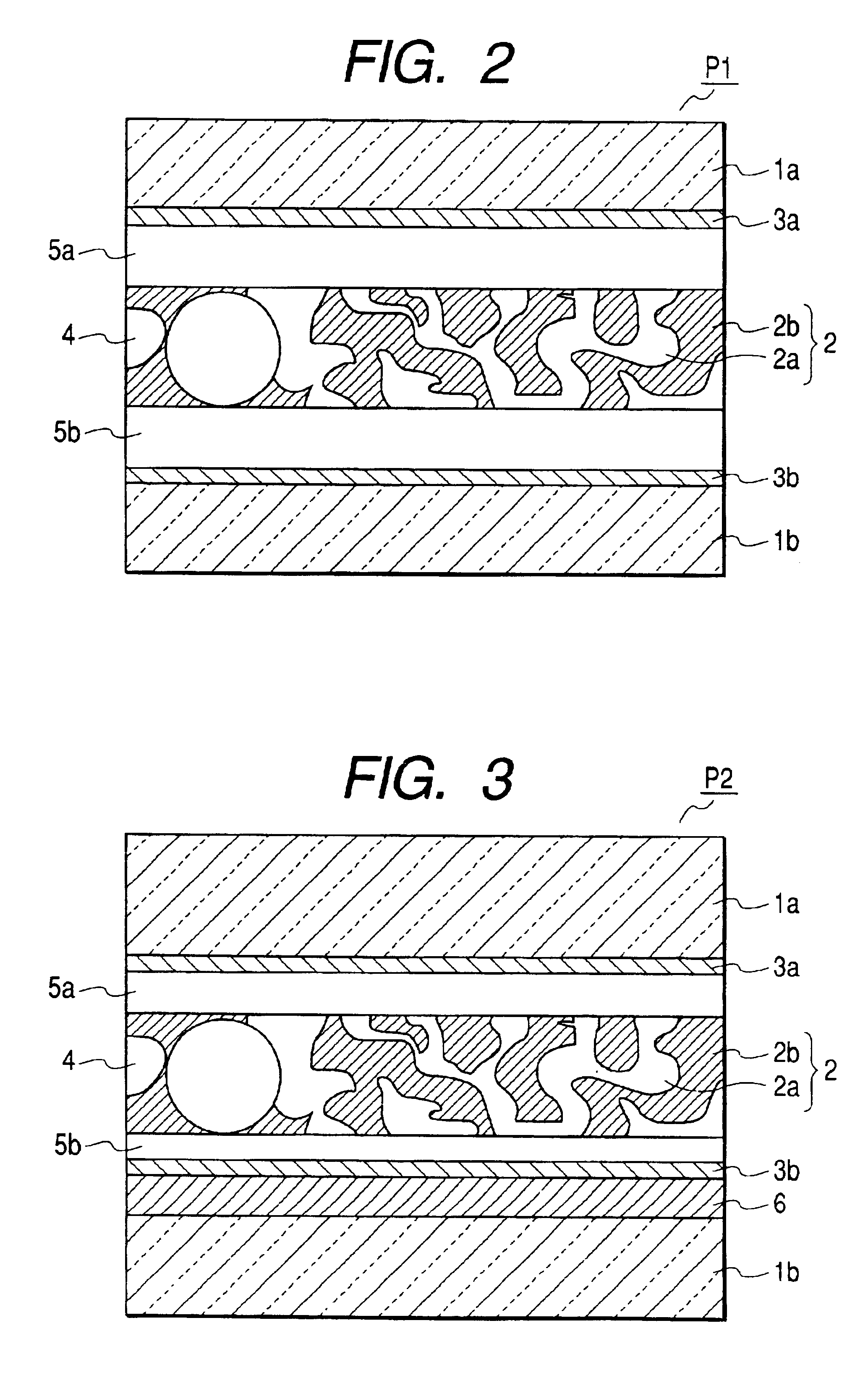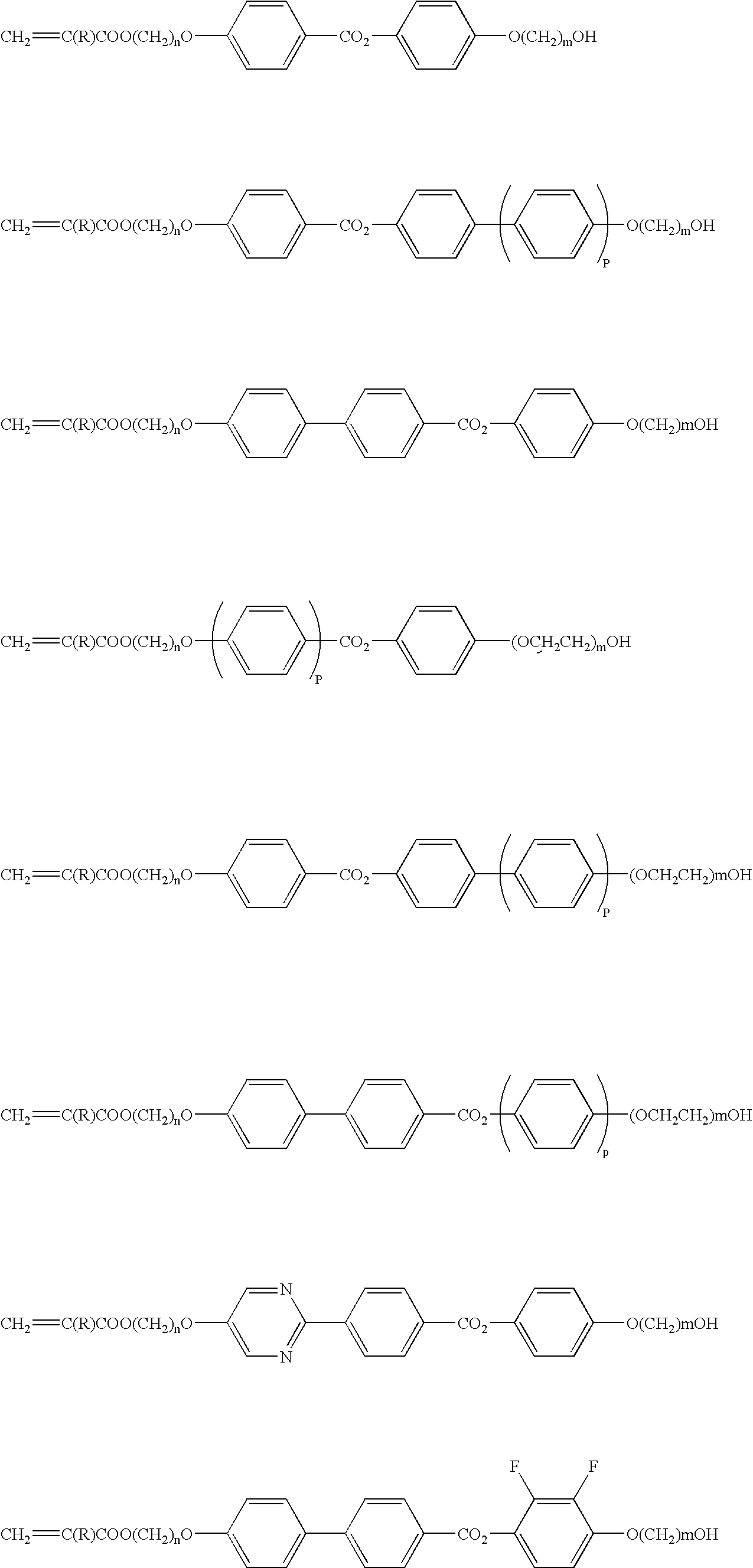Liquid crystal device
a liquid crystal device and liquid crystal technology, applied in the field of liquid crystal devices, can solve the problems of poor dispersion, poor image preservation ability of known compounds, and inability to achieve uniform brightness and contrast, and achieve the effect of high energy saving and free from uneven brightness and contras
- Summary
- Abstract
- Description
- Claims
- Application Information
AI Technical Summary
Benefits of technology
Problems solved by technology
Method used
Image
Examples
examples of synthesis
[0060]Compounds according to the invention can be synthetically produced by a method as described below. The compounds used for the synthetic methods described below are simply examples and the present invention is by no means limited thereto.[0061]1) An example of synthesis of a liquid crystal compound having an OH group at an end and a polymerizing group at the other end of the molecule [0062]2) An example of synthesis of a liquid crystal compound having a polyethylene oxide chain at an end and a polymerizing terminal at the other end of the molecule
[0063]Now, the methods for synthetically producing the above compounds will be described in greater detail.
Synthesis of Compound (A)
[0064]50 mmol of 4-benzyloxyphenol, 55 mmol of potassium carbonate and 55 mmol of 2-(2-(2-chloroethoxy)ethoxy)etanol were heated and refluxed in ethanol for 7 hours. The ethanol was removed by distillation and the ingredients that could dissolve into a mixture solvent of hexane and ethyl acetate were sub...
example 1
[0083]Compound A1 used in this example is:
Compound A2 used in this example is:
Pigment used in this example:
[0084]Carbon Black Mogul L available from Cabot.
[0085]Compound A1, compound A2, carbon black, glycerol, isopropyl alcohol, and distilled water were mixed by respective weight portions of 2, 7, 4, 19, 10 and 60 in a sand mill to obtain a dispersion type ink, which was then filled into the black ink tank of an ink-jet printer (type: BJC-430J) available from Canon and used for a printing operation conducted on plain paper.
example 2
[0086]Polymeric compound A3 obtained by means of radical polymerization of A2 of Example 1 was used in this example. Compound A3, carbon black, glycerol, isopropyl alcohol, and distilled water were mixed by respective weight portions of 6, 3, 18, 10 and 63 in a sand mill to obtain a dispersion type ink, which was then filled into the black ink tank of an ink-jet printer (type: BJC-430J) available from Canon and used for a printing operation conducted on plain paper.
PUM
| Property | Measurement | Unit |
|---|---|---|
| diameter | aaaaa | aaaaa |
| diameter | aaaaa | aaaaa |
| glass transition temperature Tg | aaaaa | aaaaa |
Abstract
Description
Claims
Application Information
 Login to View More
Login to View More - R&D
- Intellectual Property
- Life Sciences
- Materials
- Tech Scout
- Unparalleled Data Quality
- Higher Quality Content
- 60% Fewer Hallucinations
Browse by: Latest US Patents, China's latest patents, Technical Efficacy Thesaurus, Application Domain, Technology Topic, Popular Technical Reports.
© 2025 PatSnap. All rights reserved.Legal|Privacy policy|Modern Slavery Act Transparency Statement|Sitemap|About US| Contact US: help@patsnap.com



